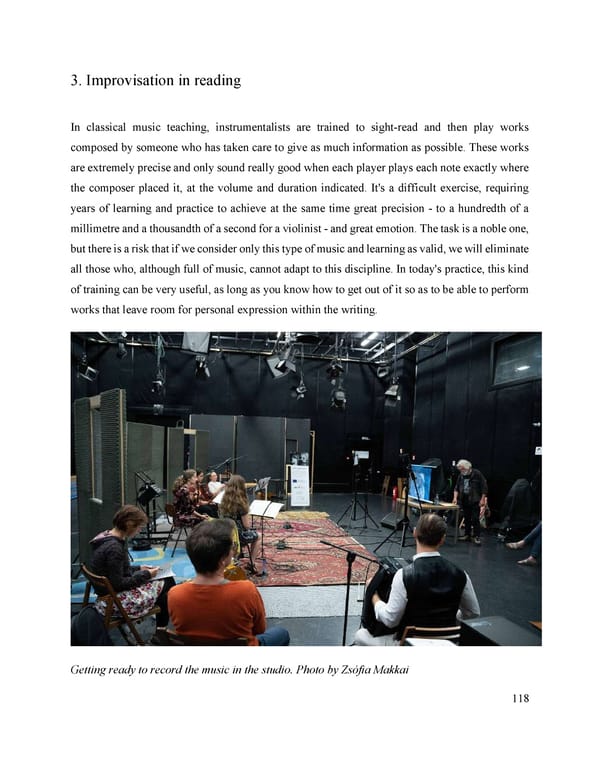3. Improvisation in reading In classical music teaching, instrumentalists are trained to sight-read and then play works composed by someone who has taken care to give as much information as possible. These works are extremely precise and only sound really good when each player plays each note exactly where the composer placed it, at the volume and duration indicated. It's a difficult exercise, requiring years of learning and practice to achieve at the same time great precision - to a hundredth of a millimetre and a thousandth of a second for a violinist - and great emotion. The task is a noble one, but there is a risk that if we consider only this type of music and learning as valid, we will eliminate all those who, although full of music, cannot adapt to this discipline. In today's practice, this kind of training can be very useful, as long as you know how to get out of it so as to be able to perform works that leave room for personal expression within the writing. Getting ready to record the music in the studio. Photo by Zsófia Makkai 118
 Lost Analogue: Exploring Film, Music, and Interdisciplinary Methods in Education Page 118 Page 120
Lost Analogue: Exploring Film, Music, and Interdisciplinary Methods in Education Page 118 Page 120